Walking through a few Mexican flavors, tastes and history
Walking through a few Mexican flavors, tastes and history
By Monica Sauza
For the 11th year in a row, Cozumel 4 You devotes the month of September, Patriot Month, to learning about Mexican history, culture, and historical figures. To start off Patriot Month with a bang, Monica Sauza, guest authors, an article about flavors, and history.
This is the Independence month and even though the Spanish conquistadors remained in Mexico for over 300 years (1519-1821), many
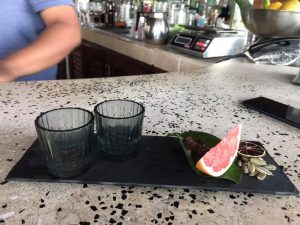
ancient cultural aspects and traditions of ancient Mexican cultures lingered deeply-rooted, surviving even today and the legacy is present among us not only through a rich culture but also in its food and drinks. Much of the cultural legacy is rooted to myths and legends. For the time being we will address a few the alcoholic and non-alcoholic beverages, some were sacred to the ancients and mostly used for ceremonial purposes. Here are just a few:
The Atole or Atol, a pre-Hispanic ceremonial non-alcoholic beverage of thick consistency made out of corn, spiced with cocoa, chili and honey, and its origins are shared with other Mesoamerican cultures. Spaniards did not like its taste, so they mixed it with milk or water; this gave origin to the champurrado, which is actually a frothy Atole. Nowadays, Atole can be found commercially at the supermarket and in different flavors.
Who doesn’t like chocolate? Chocolate/Cocoaoriginated in Mexico. Before the arrival of the Spanish conquistadors, cocoa beans were used not only to prepare drinks but also for commercial exchange, therefore were highly respected. Legend says that god Quetzalcoatl (the feathered serpent) came from the skies to share wisdom with men and brought a gift: the cacao plant. It was also considered as an aphrodisiac and it is said that emperor Moctezuma drank 40 cups of chocolate every day.
Horchata, a rice based beverage traditional in all Mexico (mostly in the Yucatan) that combines almonds, cinnamon, lime zest and sugar; aromatic and delicious.Cacapote, non-alcoholic,made from grinded cocoa beans, corn and cinnamon. Escamochas, made
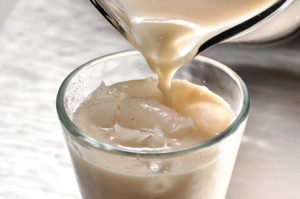
out of fresh fruits with alcohol, typical in the state of Jalisco.
Myth speaks that goddess Mayahuel was a beautiful young woman who lived in the sky with her terrible grandmother; she ran away from home to marry Quetzalcoatl, but the grandmother discovered Mayahuel and had her killed. Her remains were buried by her lover, Quetzalcoatl; and thus was born the first maguey (agave) plant, but was burnt by the gods because of what Mayahuel had done. After a storm and fire, a sweet nectar surfaced; it tasted like honey and had an enticing smell: the blood of Mayahuel. Since early times, the nectar became a ritual and ceremonial drink, and nowadays the following are produced:
Pulque (octli, the “wine of the earth”) is fermented mead from the agave plant and not too well-known around the world. In pre-Hispanic times it was disapproved of as the drunkenness it caused was the reason of an “infernal tempest that brought all evil”, only elders and the sick were allowed to drink it. But once the conquistadors arrived, this rule was transgressed. Pulque was and is a traditional alcoholic drink nowadays also known as “Curado”, a type of cocktail made with different fruits and sweetened. Still produced in limited quantities as it is difficult to preserve and store.
Mexico is the only country in the world that produces Mezcal, the drink of the gods; now known as the “Mexican cognac”. Scientific research reports that its preparation might have begun twenty-four hundred years ago. “All Tequila is Mezcal, but not all Mezcal is Tequila”, goes a popular motto. Although produced in seven states throughout Mexico, it is a traditional drink from the state of Oaxaca. Some say that in the ancient past only the political, economic and religious elite could drink it in ceremonies; others say that the agave juices were used during pregnancy and as medicine for sick children and elders. This agave distillate has more than twenty different varieties. Its production is artisanal, not industrial as Tequila, and uses techniques passed down through generations since pre-Hispanic times and its production is limited.
Now, who hasn’t heard of Tequila? Born in the region of Tequila, state of Jalisco, its origins are still unknown and its distillation process was brought in by the Spaniards. There are several kinds of tequila with different categories. A legend says that a group of Tiquilan Indians seeking shelter in a cave from the rain saw a bolt of lightning strike a field of agave plants and after the rain subsided a sweet smell was felt in the air, they reached one of the plants and tasted it. One of the Indians took it home and several days later saw small thick bubbles gushing out of it. He tasted them and felt his personality change. The indigenous people considered it as a gift from the goddess Mayahuel. And, by the way, the Margarita cocktail was created in 1942 by a barman from Chihuahua.
The Maya used their knowledge of plants and together with religious traditions gave origin to ceremonial liquors, some of which are still used. The Balché, “sacred wine”, the Maya liquor par excellence, was and is prepared with fermented honey and bark of the balché tree, sweetened with honey or anise. Used for purification and to produce certain altered states of consciousness. In the state of Tabasco, it’s non-alcoholic and as an offering to the land, to the lords of the hills and elves, as these watch over of the fields and animals. The Saká, comes from the Mayan word Sak which means corn. The myth of creation in the Popol Vuh speaks of man and maize (corn) being one, in correspondence man farms it and the maize feeds man and his family. In most Maya villages, the ceremony to Chá Chaak (god of rain) with Saká is still in practice.
The Xtabentún, “entangled vines that grow on stones”, is the most famous Mayan liquor made from the flower of the Turbina corymbosaas tree, fermented honey and anise. Legend speaks of two women, one known as Xtabay, but who was called Xkeban (prostitute) and the other Utz-Colel. The former was generous, passionately gave all her love to the sick, the poor, the animals and protected those who had been forsaken; the latter was cold-hearted and hated the poor. One day Xkeban died and from her house a sweet smell of flowers streamed. Utz-Colel, furious, said the sweet smell could not come from such a corrupt and vile body, that it must be the evil spirits. After Xkeban was buried, her tomb was found covered in beautiful flowers, and their nectar was sweetly intoxicating. The Maya considered the origins of the Cacao (cocoa) as divine. Grown by them more than 2500 years ago and, just like other cultures, used by as currency. It had stimulant and calming effects. The Maya celebrated a yearly festival in April to honor the god Ek Chuah; the event included sacrifices of dogs and other animals painted with chocolate, also offerings, incense and exchange of gifts.
Mónica Sauza, has lived 36 years in Cozumel. She is an Expert Translator and for over 20 years has provided assistance to foreign nationals.
Recorriendo algunos sabores mexicanos e historia
Por undécimo año consecutivo, Cozumel 4 You dedica el mes de Septiembre, el Mes Patrio, para conocer la historia, cultura y personajes históricos de México. Comenzamos con el Mes Patrio con estruendo; Mónica Sauza, como autor invitado, escribe un artículo acerca de los sabores e historia.
Este es el mes de la Independencia y a pesar de que los conquistadores españoles permanecieron en México por más
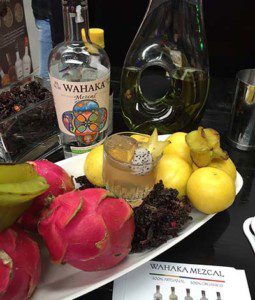
de 300 años (1519-1821), muchos aspectos culturales y tradiciones del antiguo México subsistieron profundamente arraigados, sobreviviendo incluso hasta la actualidad, y el legado se encuentra entre nosotros no sólo a través de una rica cultura sino también en la comida y en la bebida. Gran parte del legado cultural se asienta en los mitos y leyendas. Por el momento hablaremos de unas cuantas bebidas alcohólicas y no alcohólicas, algunas fueron sagradas para los antiguos pobladores y en gran parte utilizadas para fines ceremoniales. Aquí tenemos unas cuantas.
El Atole o Atol, una bebida no alcohólica prehispánica de espesa consistencia hecha a base de maíz, condimentada con cacao, chile y miel, y sus orígenes se comparten con otras culturas mesoamericanas. A los españoles no les agradaba el sabor por lo que la mezclaron con leche o agua; ello dio origen alchampurrado, un Atole espumoso. En la actualidad puede encontrar Atole en los supermercados y en distintos sabores.
¿A quién no le gusta el chocolate? El Chocolate/Cacaotiene sus orígenes en México. Antes de la llegada de los conquistadores españoles las semillas de cacao eran utilizadas no sólo para la preparación de bebidas sino también para el intercambio comercial, por lo tanto, eran altamente apreciadas. Según dice la leyenda, el dios Quetzalcóatl (la serpiente emplumada) bajo del cielo para compartir la sabiduría con los hombres y trajo consigo un regalo: la planta de cacao. También se consideraba como un afrodisiaco, y se dice que el emperador Moctezuma consumía diariamente hasta 40 tazas de chocolate.
Horchata, una bebida hecha a base de arroz, tradicional en todo México (en especial en Yucatán) que combina almendras, canela, ralladura de limón y azúcar; aromática y deliciosa. Cacapote, bebida no alcohólica hecha de caco molido, maíz y canela. Escamochas, bebida hecha a base de fruta fresca con alcohol, típica del estado de Jalisco.
La leyenda dice que la diosa Mayahuel era una bella joven que vivía en el cielo con su terrible abuela; huyó de casa para casarse con Quetzalcóatl, pero la abuela descubrió a Mayahuel y ordenó su muerte. Sus restos fueron enterrados por su amante, Quetzalcóatl; nació la primera planta de agave la cual que fue quemada por los dioses por lo que había hecho Mayahuel. Después de una tormenta y del incendio surgió un néctar dulce que sabía a miel y tenía un olor seductor: la sangre de Mayahuel. Desde los primeros tiempos el néctar se convirtió en bebida ritual y ceremonial, y en la actualidad del agave se producen las siguientes bebidas:
El Pulque (octli, el “vino de la tierra”) es aguamiel fermentada de la planta de agave y no es muy conocido alrededor del mundo. En tiempos prehispánicos era mal visto ya que la embriaguez que producía era la causa de una “tempestad infernal que traía toda maldad”, sólo se permitía a los ancianos y a los enfermos beberlo. Y una vez que llegaron los conquistadores, se infringió esta regla. El Pulque era y es una bebida alcohólica tradicional actualmente conocido como “Curado”, un tipo de coctel elaborado a base de diferentes frutas y endulzado. Aún se produce en cantidades limitadas debido a que es difícil de conservar y de almacenar.
México es el único país en el mundo que produceMezcal, la bebida de los dioses; ahora conocido como el “coñac mexicano”. Investigaciones científicas reportan que su preparación pudo haber iniciado hace dos mil cuatrocientos años. “Todo Tequila es Mezcal, pero no todo Mezcal es Tequila”, dice un lema popular. A pesar de que su producción se realiza en siete estados de Mexico, es una bebida tradicional del estado de Oaxaca. Algunos dicen que en el pasado antiguo sólo la élite política, económica y religiosa podía beberlo en ceremonias; otros dicen que los jugos del agave se usaban en el embarazo y como medicina para los niños y adultos enfermos. Este destilado del agave tiene más de veinte especies diferentes. Su producción es artesanal, no industrial como el Tequila, y utiliza técnicas que han pasado de una generación a otra desde tiempos prehispánicos, por lo que su producción es limitada.
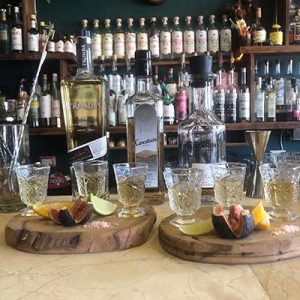
Ahora ¿quién no ha escuchado hablar del Tequila? Nació en la región de Tequila en el estado de Jalisco, sus orígenes aún se desconocen y el proceso para su destilación fue aportada por los españoles. Existen diversas clases de tequila con diferentes categorías. Una leyenda menciona que un grupo de indios tiqula, quienes buscaban refugiarse de la lluvia en una cueva, vieron un rayo caer sobre un campo de agaves, y después de que pasó la lluvia un suave aroma se sintió en el aire; tomaron una de las plantas y la probaron. Uno de los indios la llevó a casa y varios días después vio que de ella brotaban pequeñas y gruesas burbujas. Las probó y sintió que su personalidad cambiaba. Los indígenas lo consideraban un regalo de la diosa Mayahuel. Y, por cierto, el coctel margarita fue creado en el año 1942 por un barman de Chihuahua.
Los mayas hicieron uso del conocimiento que tenían sobre las plantas y aunado a las tradiciones religiosas, crearon licores ceremoniales, algunos de los cuales aún se utilizan. El Balché, “vino sagrado”, el licor maya por excelencia, era y aún es preparado a base de miel fermentada y la corteza del árbol de balché, endulzado con miel o anís. Su uso es para la purificación y para producir ciertos estados alterados de conciencia. En el estado de Tabasco no contiene alcohol y se usa como ofrenda para los señores de los montes y los duendes, ya que ellos cuidan de las tierras y de los animales. ElSaká, proviene de la palabra maya Sak que significa maíz. La leyenda de la creación en el Popol Vuh habla del hombre y el maíz como un solo ser, por correspondencia el hombre lo cultiva y el maíz alimenta al hombre y a su familia. En la mayoría de los poblados maya aún se estila la ceremonia a Chá Chaak (dios de la lluvia) con el Saká. El Xtabentún, “viñas enredadas que crecen sobre la piedra”, es el licor maya más famoso que se elabora de la flor del árbol Turbina corymbosaas, miel fermentada y anís. La leyenda cuenta de dos mujeres, una conocida como Xtabay, pero llamada Xkeban (prostituta) y la otra Utz-Colel. La primera era generosa, apasionadamente entregaba su amor a los enfermos, a los pobres, a los animales y protegía a los desamparados; la segunda era fría de corazón y odiaba a los pobres. Un día falleció Xkeban y de su casa emanaba un dulce aroma de flores. Utz-Colel, encolerizada, decía que el dulce aroma no podía provenir de un cuerpo tan corrupto y vil, que debían ser espíritus malignos. Después de que Xkeban fuera enterrada, su tumba se cubrió de bellas flores y el néctar era dulcemente embriagante. Los mayas consideraban que el origen delCacao era divino. Ellos lo cultivaron hace más de 2500 años y, al igual que otras culturas, lo utilizaron como moneda. Tenía efectos tanto estimulantes como tranquilizantes. Los mayas celebraban el festival anual en el mes de Abril en honor al dios Ek Chuah; este acontecimiento incluía sacrificios de perros y otros animales pintados con chocolate, además de ofrendas, incienso e intercambio de regalos.
Mónica Sauza vive en Cozumel desde hace 36 años. Es Perito Traductor y desde hace más de 20 años ha brindado ayuda a personas de nacionalidad extranjera.
Otra fugitiva de la Ciudad de México. Mónica ha hecho de Cozumel su hogar definitivo. Desde su llegada en 1981, trabajo en turismo en todos los lugares habituales: hoteles, buceo, aeropuerto, ferries, hasta que se abrió la oportunidad de desempeñarse en su campo. Desde finales de la década de los años 70 Mónica ha estado traduciendo e interpretando, dedicándose plenamente a ello a partir de 1998, y ha asistido a extranjeros y locales de la Isla a establecer su residencia y sus negocios. Es traductora con gran experiencia, ávida historiadora y una gran fuente de tradiciones y leyendas locales.
- Mexican History 3 Kings Day - January 8, 2025
- 2025 Mexican National Holidays - January 3, 2025
- Mayan Weather Predictions - January 2, 2025
Another escapee from Mexico City, Monica has made Cozumel her definite home. Since her arrival -in 981- she worked in tourism in all the usual venues: hotels, scuba diving, airport, ferries, until the opportunity to practice in her chosen field grew. Since the latter part of the 70s Monica has been translating and interpreting, fully devoting herself to it since 1998, and has assisted foreigners and Island residents establish residence and businesses- She is a Translator with extensive experience, an avid historian and a great source of local lore and legends. Otra fugitiva de la Ciudad de México. Mónica ha hecho de Cozumel su hogar definitivo. Desde su llegada en 1981, trabajo en turismo en todos los lugares habituales: hoteles, buceo, aeropuerto, ferries, hasta que se abrió la oportunidad de desempeñarse en su campo. Desde finales de la década de los años 70 Mónica ha estado traduciendo e interpretando, dedicándose plenamente a ello a partir de 1998, y ha asistido a extranjeros y locales de la Isla a establecer su residencia y sus negocios. Es traductora con gran experiencia, ávida historiadora y una gran fuente de tradiciones y leyendas locales.
Punta Celarain Cozumel History
Punta Celarain Cozumel History Punta Celarain and the Celarain Lighthouse Both Bear...
Significance May 1 May 5 Mexico
Significance May 1 May 5 Mexico The Significance of May 1 and...
Cozumel Museum
Cozumel Museum Cozumel’s “Museo de la Isla” Celebrates 38 Years Cozumel’s...
Feria Cedral Schedule
Feria Cedral Schedule La Feria de El Cedral & La Fiesta...







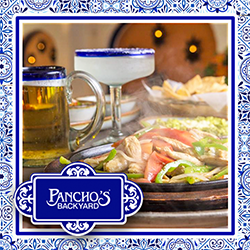

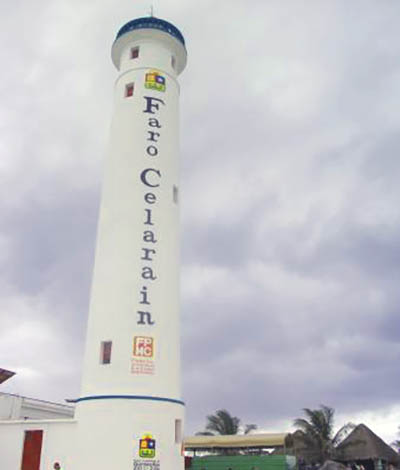
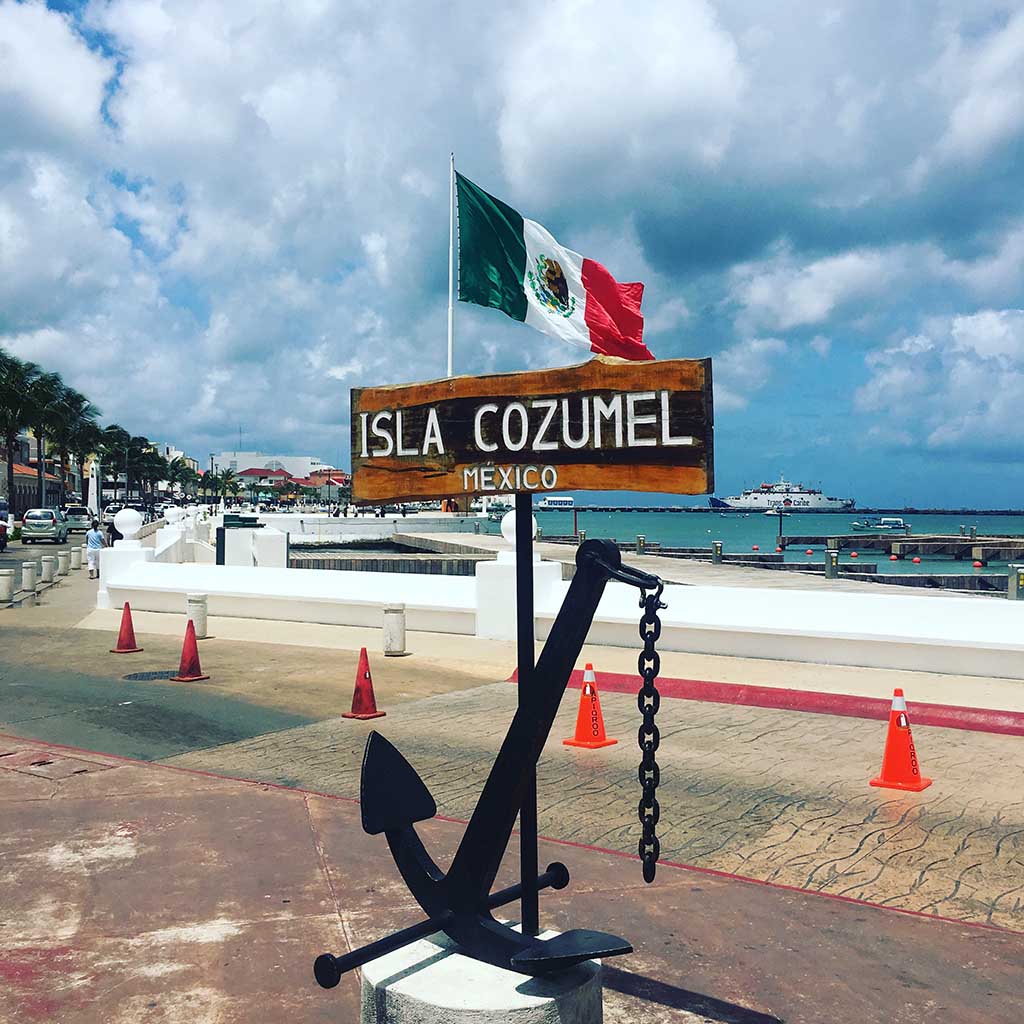
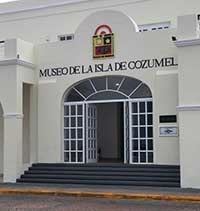
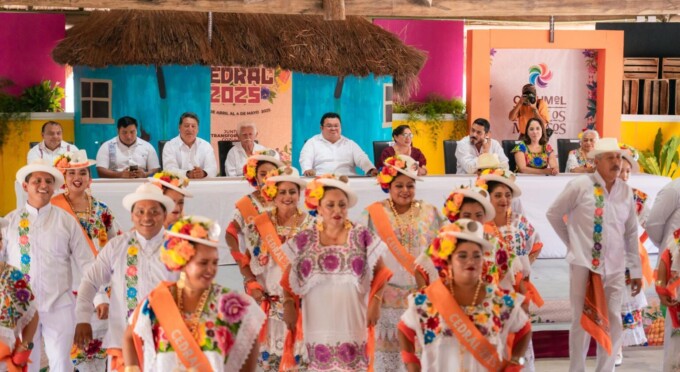


Leave a comment